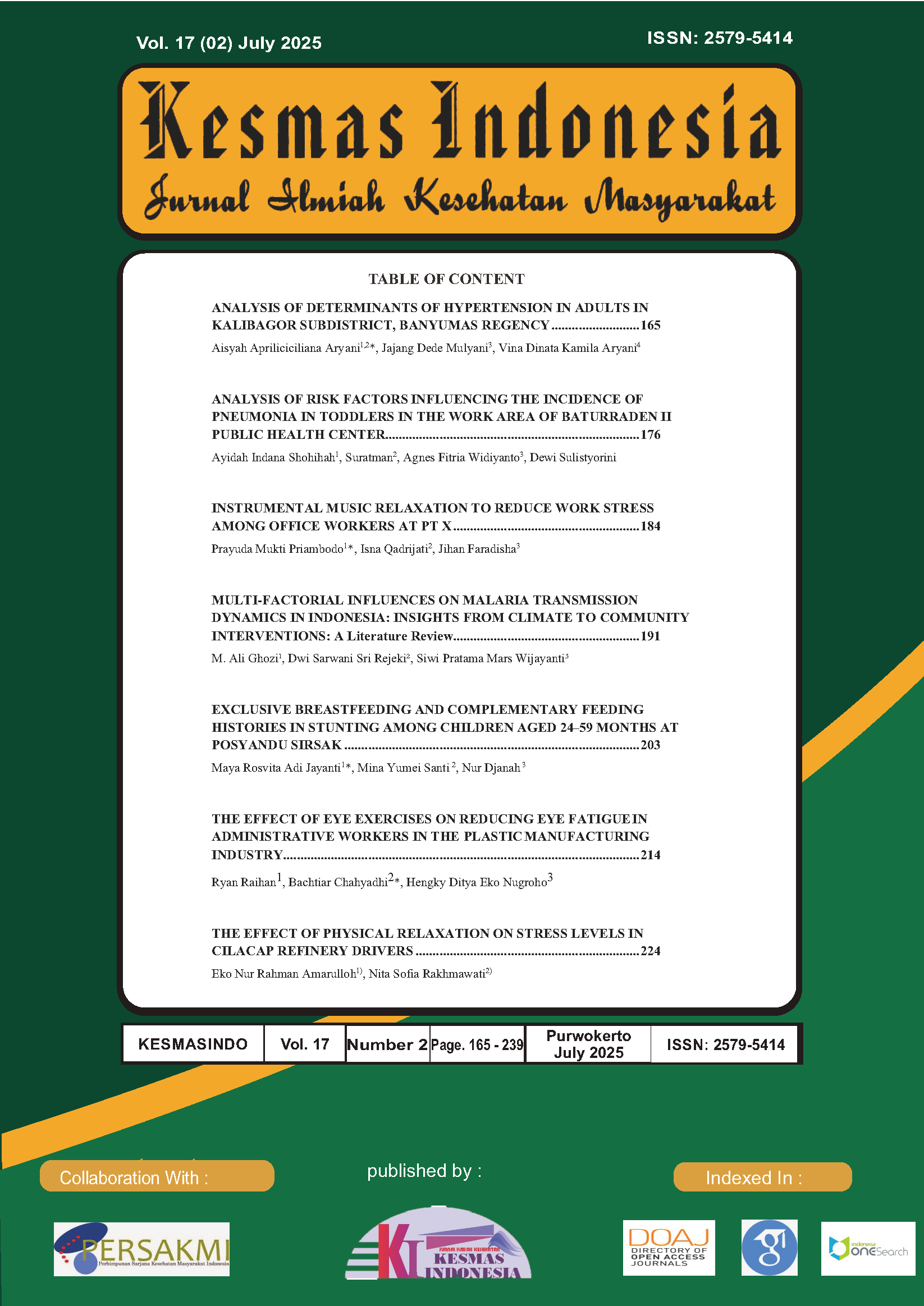ANALYSIS OF RISK FACTORS INFLUENCING THE INCIDENCE OF PNEUMONIA IN TODDLERS IN THE WORK AREA OF BATURRADEN II PUBLIC HEALTH CENTER
ANALYSIS OF RISK FACTORS INFLUENCING THE INCIDENCE OF PNEUMONIA IN TODDLERS IN THE WORK AREA OF BATURRADEN II PUBLIC HEALTH CENTER
Abstract
Background: Pneumonia is the causes of death in children. Baturaden District is an area with a high incidence of pneumonia, with a prevalence rate of 4%. Pneumonia in under-five children can be caused by a variety of factors. The aim of this study was to identify factors influencing the incidence of pneumonia in under- five children in the work area of the Puskesmas Baturaden II.
Methods: This study is a quantitative analysis observational study with a case- control design using a total of 108 samples consisting of 54 case samples and 54 control samples. Questionnaires, documents and stationery served as research tools. Data analysis was univariate analysis, bivariate analysis with chi-square test, and multivariate analysis with multiple logistic regression test.
Results: Analysis showed that exclusive breastfeeding (p value = 0.003), the presence of smokers in the home (p value = 0.008), and the use of mosquito coils (p value = 0.045) influenced incidence pneumonia in under-five children. Nutritional status, DPT and measles vaccination status, vitamin A administration, floor type, wall type, ceiling condition, and the use of mosquito coils had no effect on the incidence of pneumonia (p value > 0.05).
Conclusion: Exclusive breastfeeding is the most influential risk factor for the development of pneumonia in under-five children in the working area of Puskesmas Baturaden II. Therefore, a mother needs to increase understanding and awareness to provide exclusive breastfeeding to under-five children so that under-five children’s immunity is in good condition.




.png)




